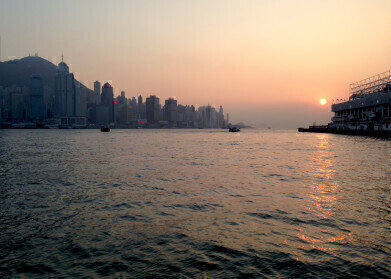Air Monitoring
Is China’s Anti-Pollution Technology Doing Enough to Tackle Air Pollution?
May 18 2016
For much of the last few decades, the incredibly competitive Chinese market and its accompanying industrial growth marked it out as the biggest polluting country in the world. The government’s refusal to acknowledge the existence of the problem only exacerbated it, and as recently as 2010, Secretary General of the UN Ban Ki-moon warned that seven of the ten most polluted cities in the world were in China.
In the intervening five years, China has made moves to clean up its act. The almost uninhabitable levels of pollution in 2013 led to the year being known as the "airpocalypse", and it was at this point that the government finally began to sit up and take notice. Although the country still faces dire problems in terms of its air quality, it is believed to be moving in the right direction.
Turning Over a New Leaf
Since 2013, the Chinese government has made a concerted effort to promote awareness about air quality in the country. The nation has entered a new era in air quality monitoring and the popularity of commercially available air quality monitors has exploded over the past few years.
Prior to the “airpocalyspe”, air purifiers were pretty much non-existent in a home setting. However, the very next year, the number of companies manufacturing air quality units had leapt up from 151 to 556. This jump represented a bump in 3.5bn yuan (£384m) for the air purification industry, according to Daxue Consulting.
Though figures dropped in 2015, with the overall industry value tumbling by 18% and individual unit sales falling by slightly less than 10%, this is most likely attributable to a flurry of low-quality, low-cost products flooding the market. Conversely, higher end products became more popular in this time, displaying a growing fixation on quality air pollution monitors rather than a device which would pay mere lip service to the idea.
A Long Way to Go
In the first three months of 2013, the air quality index (AQI) in Beijing showed an average of 208. By the first three months of 2015, this figure had fallen to 156. Obviously, the new obsession with clean air has had an effect on the habits of the nation, as the government has sought to curb pollutant energy methods, encourage renewables and above all, promote air monitoring across the nation.
However, it still has a long way to go. As of August 2015, a study found that poor air quality was still responsible for as many as 4,000 deaths on a daily basis. Although Chinese cities may have fallen out of the top ten most polluted metropolises altogether, they still make up more than 25% of the 200 dirtiest cities worldwide.
Monitoring air pollution is a great step in recognising there is a problem – but in itself, it does not attack the root causes of the issue. Doing so will take a collective efforts from Chinese homeowners, businessmen and authorities alike to move away from polluting habits and create a more sustainable way of life.
Digital Edition
IET 34.2 March 2024
April 2024
Gas Detection - Biogas batch fermentation system for laboratory use with automatic gas analysis in real time Water/Wastewater - Upcycling sensors for sustainable nature management - Prist...
View all digital editions
Events
Apr 22 2024 Hannover, Germany
Apr 22 2024 Marrakech, Morroco
Apr 23 2024 Kuala Lumpur, Malaysia
Apr 23 2024 Kintex, South Korea
Apr 23 2024 Edmonton, AB, Canada


















